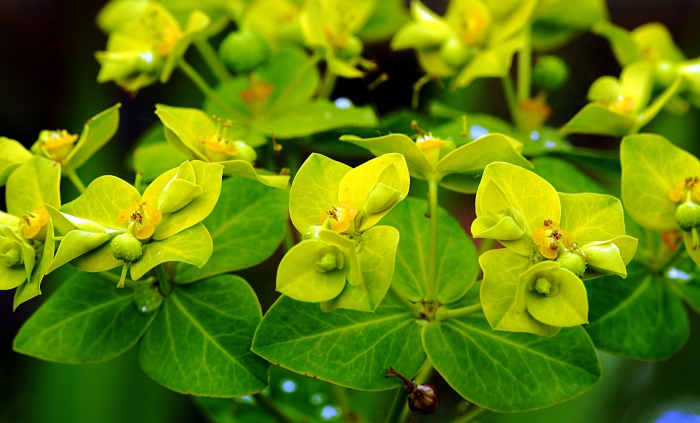Horned Spurge
(Euphorbia cornigera)
Horned Spurge (Euphorbia cornigera)
/
/

Hedwig Storch
CC BY-SA 3.0
Image By:
Hedwig Storch
Recorded By:
Copyright:
CC BY-SA 3.0
Copyright Notice:
Photo by: Hedwig Storch | License Type: CC BY-SA 3.0 | License URL: https://creativecommons.org/licenses/by-sa/3.0 | Uploader: Hedwig Storch | Publisher: Wikimedia Commons | Title: Euphorbia_cornigera_'Goldener_Turm'_-_Hohe_Wolfsmilch_7305.JPG | Notes: Euphorbia sp. - 2 mai 2004 ~~~~ {{GFDL}} |


























Estimated Native Range
Summary
Euphorbia cornigera, commonly known as horned spurge, is a rhizomatous herbaceous perennial native to rocky and grassy places in Central Asia, including regions of Kazakhstan and Siberia. It typically grows to 75 cm (30 in) tall and is characterized by its narrow green leaves, each with a pale green spine, giving it a distinctive appearance. The acid yellow flowerheads, known as cyathia, are borne in summer and are quite showy, attracting pollinators to the garden. Horned spurge is particularly noted for its architectural form and vibrant flower color.
Horned spurge is valued for its drought tolerance and unique flower structure, which has earned it the Royal Horticultural Society’s Award of Garden Merit. It is often used in rock gardens, as a border plant, or in xeriscaping due to its low water requirements. While it thrives in full sun or part shade, it prefers well-drained soils and can tolerate a range of soil types, from sandy to loamy. However, gardeners should handle this plant with care, as all parts are highly toxic if ingested, and the sap can cause skin irritation. It is advisable to wear gloves when working with Euphorbia cornigera to avoid contact with the sap. Despite its ornamental qualities, it is important to consider its placement in gardens where pets or children are present due to its toxicity.CC BY-SA 4.0
Horned spurge is valued for its drought tolerance and unique flower structure, which has earned it the Royal Horticultural Society’s Award of Garden Merit. It is often used in rock gardens, as a border plant, or in xeriscaping due to its low water requirements. While it thrives in full sun or part shade, it prefers well-drained soils and can tolerate a range of soil types, from sandy to loamy. However, gardeners should handle this plant with care, as all parts are highly toxic if ingested, and the sap can cause skin irritation. It is advisable to wear gloves when working with Euphorbia cornigera to avoid contact with the sap. Despite its ornamental qualities, it is important to consider its placement in gardens where pets or children are present due to its toxicity.CC BY-SA 4.0
Plant Description
- Plant Type: Herb
- Height: 2-3 feet
- Width: 2-3 feet
- Growth Rate: Moderate
- Flower Color: Yellow
- Flowering Season: Summer
- Leaf Retention: Deciduous
Growth Requirements
- Sun: Full Sun, Part Shade
- Water: Low, Medium
- Drainage: Medium, Fast
Common Uses
Bee Garden, Bird Garden, Butterfly Garden, Deer Resistant, Drought Tolerant, Low Maintenance, Rabbit Resistant, Salt Tolerant
Natural Habitat
Rocky and grassy places in Central Asia
Other Names
Common Names:
Scientific Names: , Euphorbia cornigera, Euphorbia pilosa var. cornigera,
GBIF Accepted Name: Euphorbia cornigera Boiss.